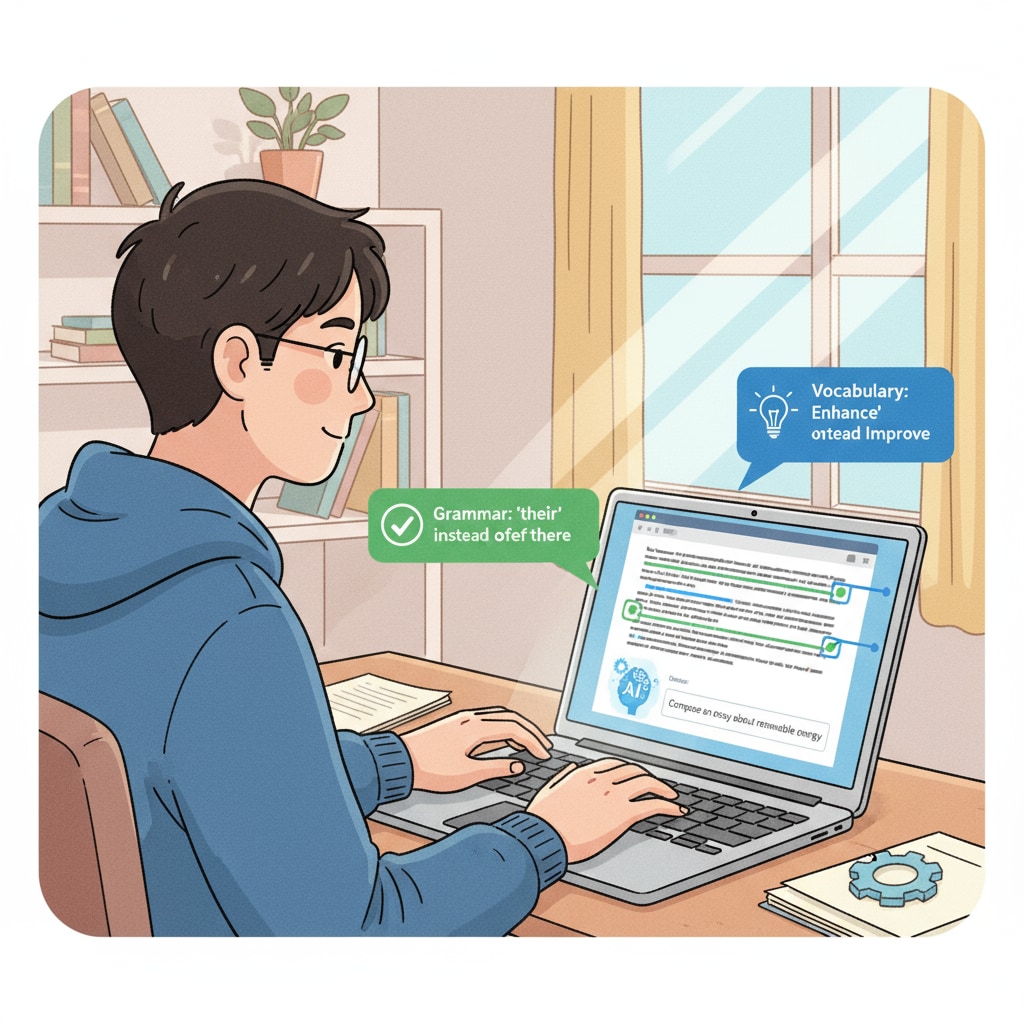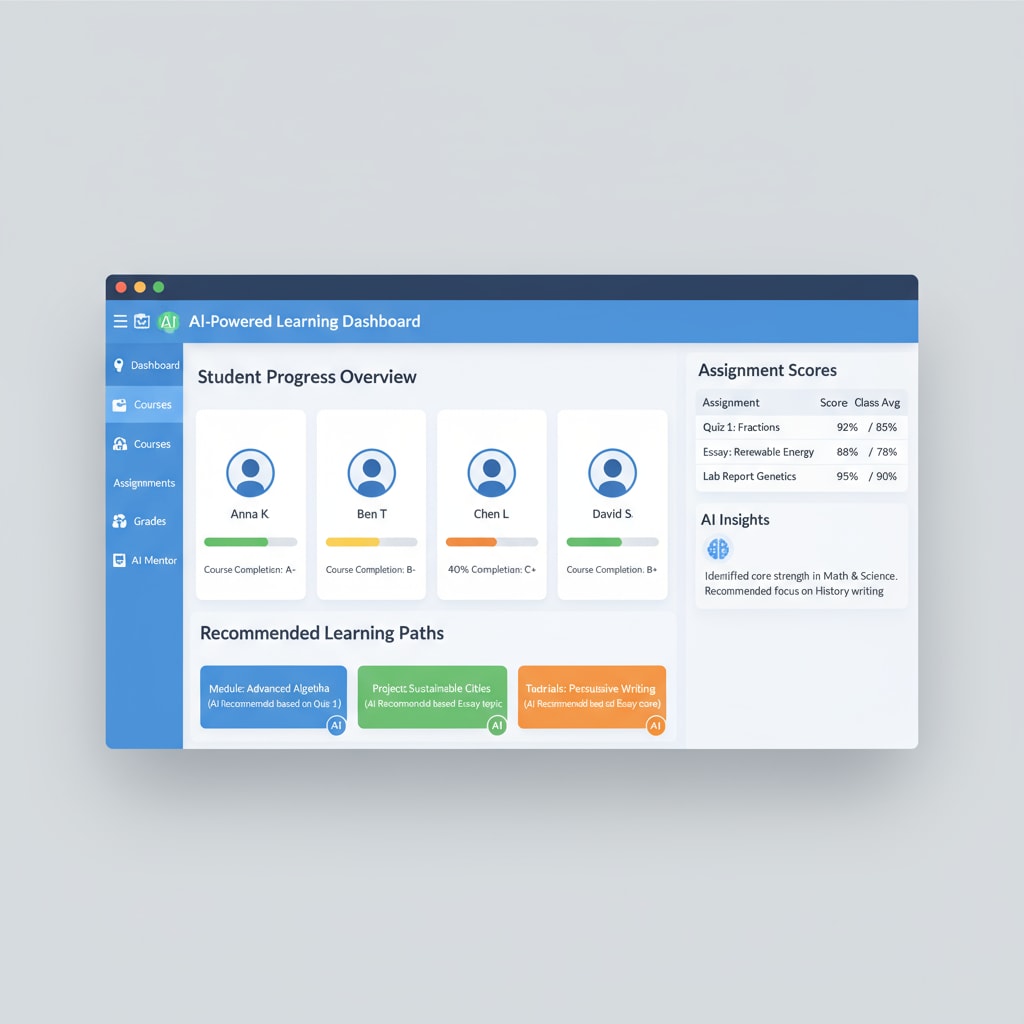In the era of rapid development of educational technology, AI learning tools have emerged as a powerful force in promoting personalized learning in K12 education. These tools come in various types, each with unique functions and suitable scenarios. Let’s take a closer look.
Writing and Creativity Tools
AI-powered writing tools are a great asset for students in K12. For example, Grammarly not only corrects grammar and spelling mistakes but also offers suggestions to improve the overall quality of writing. It helps students enhance their language proficiency and express their ideas more clearly. Another tool, Jasper, can generate creative content based on given prompts. This is useful when students are working on essays, stories, or reports, stimulating their creativity.

These tools are ideal for language arts classes, where students need to develop their writing skills and express their creativity.
Learning Management Systems (LMS) with AI Integration
Modern LMS platforms like Moodle and Canvas are now integrating AI features. These systems can analyze students’ learning data, such as their progress in assignments, quiz scores, and time spent on tasks. Based on this analysis, they can provide personalized learning paths. For instance, if a student is struggling with a particular concept, the system can recommend additional resources or targeted exercises. This personalized approach caters to the diverse learning needs of students in K12, promoting better understanding and knowledge retention. Learn more about Learning Management Systems on Wikipedia

Tutoring and Practice Tools
AI tutoring tools, such as Khan Academy’s AI-driven features, offer one-on-one tutoring experiences. They can answer students’ questions, provide step-by-step explanations, and offer practice problems. These tools are available 24/7, allowing students to get help whenever they need it. This is especially beneficial for students who may not have access to in-person tutors or need extra practice outside of regular class hours. They support personalized learning by adapting to the individual pace and learning style of each student.
Assessment and Feedback Tools
AI assessment tools can quickly grade assignments and provide detailed feedback. Tools like Turnitin not only check for plagiarism but also offer insights into the quality of writing, including areas for improvement. This immediate feedback helps students understand their strengths and weaknesses, enabling them to take corrective actions. Teachers can also use these tools to analyze the overall performance of the class and adjust their teaching strategies accordingly, promoting personalized learning at both the individual and class levels. Read more about Educational Assessment on Britannica
Multimedia and Interactive Learning Tools
AI is enhancing multimedia and interactive learning experiences. Tools like Nearpod allow teachers to create engaging lessons with interactive elements such as polls, quizzes, and virtual field trips. These multimedia-rich lessons capture students’ attention and make learning more enjoyable. The AI aspect can also analyze students’ responses during these activities, providing insights into their understanding and participation. This is useful for different subject areas in K12, making learning more immersive and personalized.
Teaching Assistant Tools
For teachers, AI teaching assistant tools are a boon. Tools like Brightspace Pulse can help teachers manage their classes more efficiently. They can automate tasks such as grading, sending out announcements, and organizing schedules. This saves teachers time, allowing them to focus more on personalized instruction and providing individual attention to students. These tools also assist in analyzing student data to identify areas where additional support may be needed.
In conclusion, in the realm of K12 education, the right choice of AI learning tools can significantly enhance educational technology and enable personalized learning. There is no one-size-fits-all “best” tool. Instead, educators and students should carefully consider their teaching and learning goals to make the most suitable and intelligent selection of these powerful AI tools.
Readability guidance: Each section focuses on a specific type of AI education tool, presenting its functions and application scenarios. Short paragraphs and clear explanations are used to enhance readability. Transition words like “for example” and “another” are employed to make the flow smooth. Lists and examples are provided to illustrate key points.


